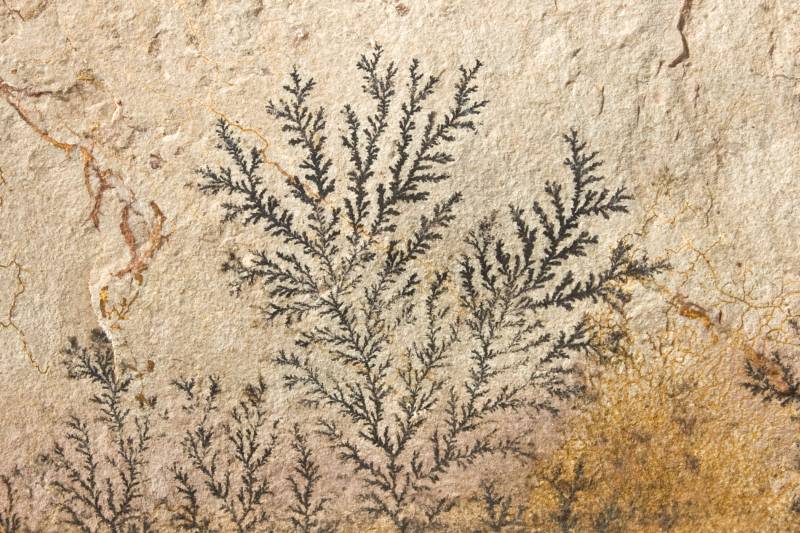Dendritic growth is a very common phenomenon in nature. We are all familiar with the way how trees grow by spreading branches and roots from the main trunk (that’s why we call this mode of growth “dendritic”). The term “dendrite” itself is used to describe branched projections of neurons.

Dendritic manganese oxide minerals in Morocco. Width of view 7 cm.
The same applies to inorganic world as well. Window frost is a beautiful dendritic phenomenon, albeit somewhat annoying. Rivers often form a dendritic drainage pattern as well although in this case we can not talk about dendritic growth in the narrow sense of the term.
Manganese oxides are well-known to form nice dendritic patterns on the surface of rocks in veins. Manganese oxides (there are several manganese-bearing minerals that grow this way) precipitate out of hydrous solutions in veins separating rocks. This (or sometimes also branchingly grown inclusions within other crystals) is what the term “dendrite” means in geology. Dendrites are common on the surface of sedimentary rocks, especially limestone.

Dendrites of manganese oxide precipitated on the surface of limestone. Width of view 10 cm.
Such dendrites are sometimes mistaken for fossils and are therefore often used as an example of a pseudofossil. Pseudofossils are natural objects that may be mistaken for fossils. Not to be confused with fake fossils which are man-made rubbish produced to cheat us.
Dendritic growth commences when the material is well below its crystallization temperature. In this case, regular growth which forms crystals with well-developed crystal faces, is replaced with a crystallization mode which favors the formation of protrusions near the corners of crystals. That way new branches develop instead of regular crystal faces. This happens to snow flakes which form out of water vapor in air which is usually much colder than the normal crystallization temperature of ice. New branches do not occur all the time. This process goes on in an orderly fashion because we are talking about crystals here. These protrusions grow larger until they reach a point when the formation of new protrusions becomes favorable again and new branches start to develop. Such a branching network forms a natural fractal-like pattern. Patterns like that repeat themselves in a smaller scale, they look similar no matter what is the zoom or scale of view.
thanks for the explanation, interesting … we see a lot of dendritic frost in winter here.